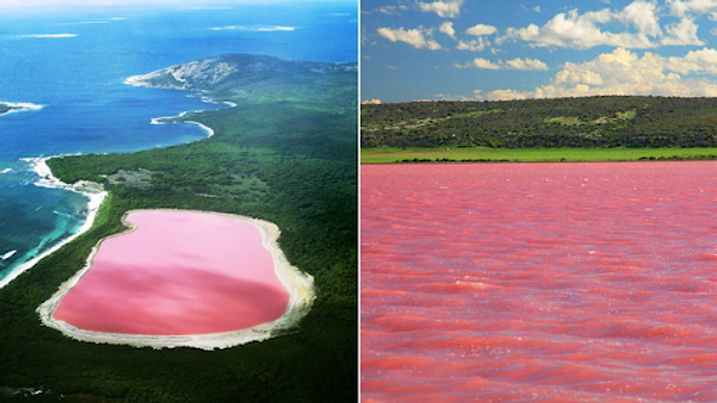Seven continents, five oceans, 195 countries, 10,000 cities, and 7.8 billion people to see it all. There are hot, sandy deserts, bustling cities, rich and productive farmland, grassy fields of flowers that appear to go on forever, colorful rainforests teeming with life, and more. However, every now and again, there are certain places that just seem unreal, ethereal, as though theyre straight out of a sci-fi or fantasy movie, born from a miraculous feat of nature.
One such place is Mexicos Hidden Beach, a large circular crater imprinted into the Marieta Archipelagos in Banderas Bay. Originally produced after repeated bombings due to Mexican military target practice in the early 1900s, it can only be accessed through an underwater tunnel. To get to this pocket of paradise, one must swim through said tunnel during low tide in order to have as much space as possible to swim in between the water and the jagged, rocky ceiling of the tunnel. The tide propels a swimmer toward the end of the tunnel and, although the tunnel itself is relatively dank and dark, the perilous journey is more than worth it as the tide thrusts you into the clear, turquoise water of the underground beach, having you wash up on the beautiful shore.
Next, is Lake Hillier on Middle Island, off the coast of western Australia andget thisits tinted the brightest bubblegum pink hue. Now, believe it or not, the color is natural, and all because of the lakes heavy salt concentration. Microorganisms, such as Halobacteria and a type of algae known as Dunaliella salina, thrive in salty environments. Halobacteria and D. salina specifically secrete red carotenoid pigments (which are typically synthesized by plants but can also be produced by algae and bacterias such as these) that cause the pink lakes bold appearance. Although visitors are advised not to swim in the lake due to its high salinity, the view on its own is surely enough to fulfill any desire for an otherworldly experience.
Third, are the salt pans in the Potosm and Oruro departments, areas of a country that are similar to states or provinces, of southwest Bolivia. Salar de Uyuni is in close proximity to the crest of the Andes, located at an elevation of 11,995 feet above sea level. This feat of nature has been deemed heaven on earth because it serves as a natural mirror. So, what is a salt pan and why do these ones reflect the sky? Salt pans are shallow geological structures that hold the salt and minerals left behind from evaporated salt water. To qualify as a salt pan, however, the climate must prevent formation lakes or ponds by creating an environment in which the rate of rainfall is faster than the evaporation rate. When evaporation takes longer than the rate of rainfall, the runoff cannot drain and results in massive deposits of minerals with a thin film of water over the salt pans, allowing visitors to traverse across. However, this geological wonder isnt just a popular tourist attraction; it also has many practical uses. Due to its flat surface that stretches about 6,500 square miles far, NASA uses it to calibrate satellite orbits from space. Additionally, 50 to 70 percent of Earths supply of lithium, a valuable component of many minerals, is harvested from insert what its harvested from (Eg. mines). All things considered, if youve ever wanted to fly, walk amongst the clouds, or simply take a perfect photo for social media, grab some water shoes and get going!
Finally, found in the dry, vast Karakum Desert of Turkmenistan, this landmark is perfect for adventure-seekers and daredevils alike. The Gates of Hell, lesser known as the Darvaza gas crater due to its proximity to the village of Darvaza, is a menacing 230 feet wide hole that has been an inextinguishable fire for over 40 years. . The hole was initially formed when a Soviet drilling rig accidentally ruptured a previously undiscovered natural gas cavern in 1971. This colossal mistake resulted in the ground collapsing underneath the drilling rig, causing it to fall into the newly formed crater. The drilling rig punctured a pocket of gas, causing poisonous fumes to rapidly leak from the area. To ensure the safety of the environment after this fiasco occurred, the Soviets set the crater aflame, allowing the poisonous fumes to slowly dissipate. The Soviets assumed that the fire would go out after a few weeks, but the pit just kept burning for decades. Despite being the product of an unfortunate drilling rig accident, this crazy landmarks constant luminescent glow continues to be seen for miles throughout Turkmenistan. The Soviet drilling rig is still believed to be down in the depths of the crater somewhere today.
At the end of the day, any place on Earth is worth experiencing, whether it be a wild tourist attraction or just a tree in your backyard that you take a moment to look at and appreciate. Sometimes, we, as humans, can get lost in our own lives and forget how amazing even the smallest, most mundane aspects of nature are and how fortunate we are to have them surround us. Many of the places above have, unfortunately, been commercialized for tourists. As such,there are many more restrictions on conduct in and access to these areas, but those limitations dont even come close to ruining the magic of these unique landforms. So, for anybody that loves adventure, once COVID restrictions are lifted, they should go to these places; take interest in the world and experience life! However, it is important to remember to never neglect the world as it is right now, it is just as breathtaking.
 Sarah Bauman, Alumni at APA
Sarah Bauman, Alumni at APA 
 Grey's Anatomy: How is It Still Running?
Grey's Anatomy: How is It Still Running?